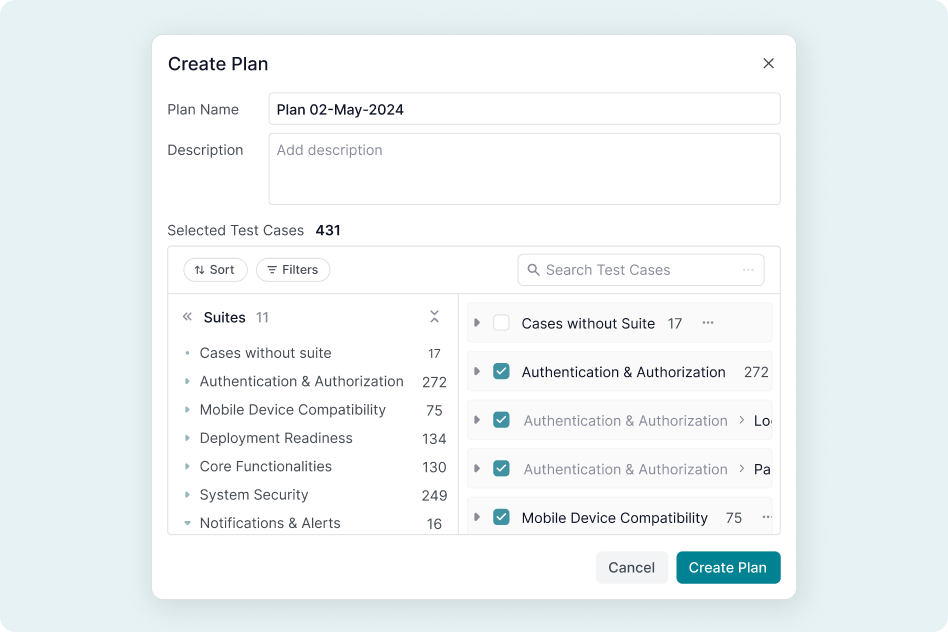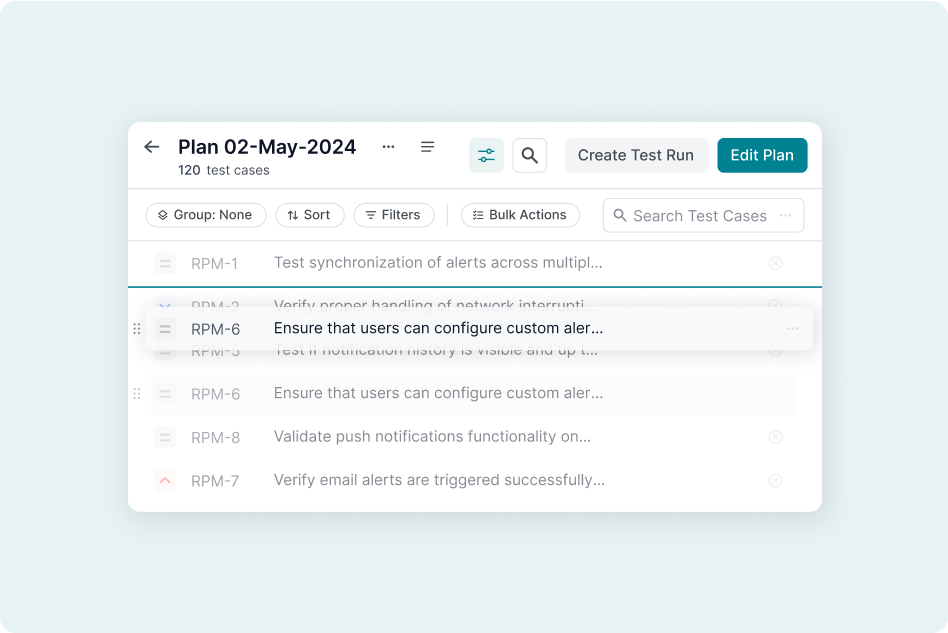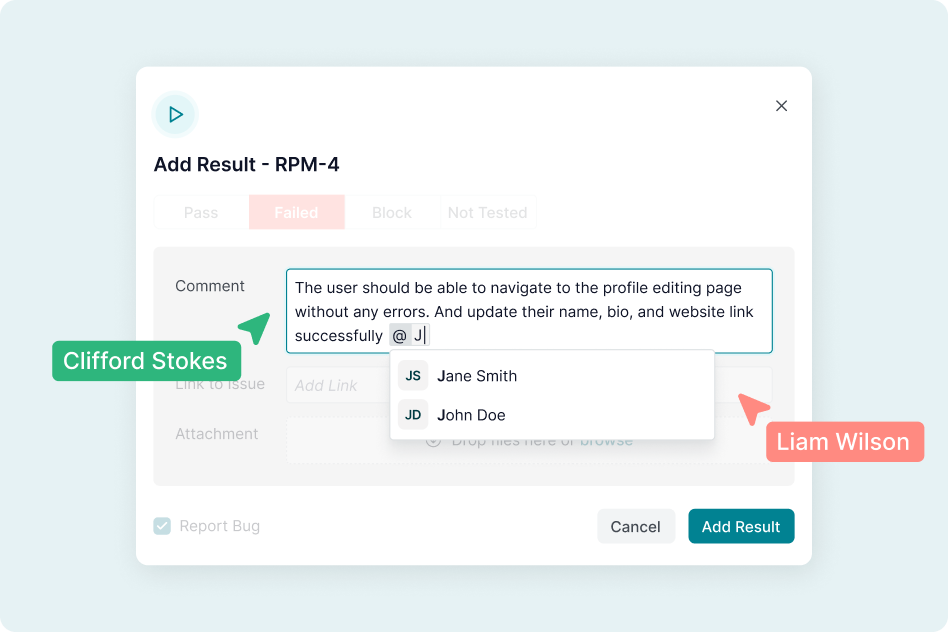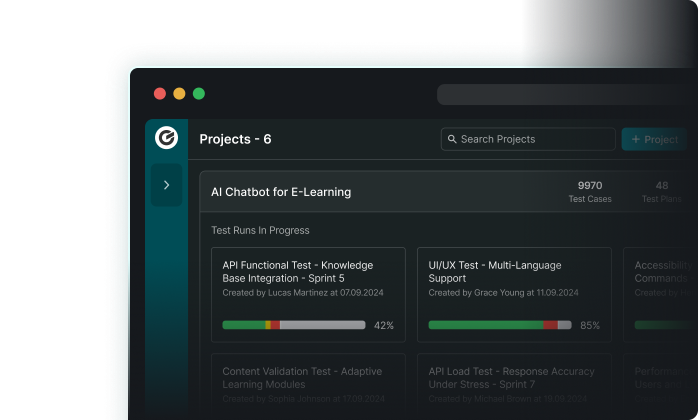

As your project evolves, so should your testing plans:

Test planning is the sequence of activities dedicated to defining the testing scope, approach, human and software resources, and schedule of testing activities. It answers the following questions:
Test planning in software testing allows you to plan the actions and create a test set before execution begins. A proper software test plan brings traceability, reduces testing risks, and helps you share the testing objectives within the QA team. Effective QA test planning allows you to ensure that projects are on schedule and quality standards are met from the very beginning.
Sometimes people may be puzzled to understand the difference between test planning vs test strategy. Let’s outline both definitions.
You should think of the test strategy as answering "why and how," while the test plan provides us with the answers "what, who, and when."
At TestCaseLab, we are happy to help you collect test cases for the test sets to be used in your software test plans. And these test plans are part of your QA strategy.
Test planning is the structured process of defining why and when testing activities should occur for a specific project or release.
A test strategy defines the general QA approach, while a test plan details the actionable steps for a specific project at a specific stage.
TestCaseLab relates test plans to test cases and test runs so that your test planning and test execution are aligned.
Sure, TestCaseLab allows real-time updates, making your software test planning convenient and agile.
